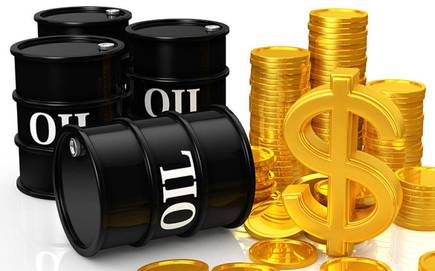
As demand dries down and storage runs out, the price of U.S. oil has fallen to a level not seen since 1999. Crude prices in U.S.’ oil capital are getting dangerously close to zero. The oil market has come under intense pressure during the coronavirus pandemic with a huge slump in demand.
The price of a barrel of West Texas Intermediate (WTI), the benchmark for U.S. oil, dropped 14% to $15.65 in Asia trading on Monday.
Brent oil, the benchmark used by Europe and the rest of the world, was slightly weaker, down 0.8% to $27.87 a barrel.
The WTI was hit particularly hard as its main U.S. storage facilities in Cushing, Oklahoma, were filling up. Stocks at Cushing have risen 18 million barrels in three weeks, which is 20% of shell capacity.
Concern continues to mount that storage facilities in the U.S. will run out of capacity, with stockpiles at Cushing, the main delivery point in the U.S. for oil, rising almost 50% since the start of March.
Buyers bidding for crude in Texas, the birthplace of the shale revolution, are offering as little as $2 a barrel for some oil streams, a precipitous markdown from a month ago. The slumping value of physical barrels is raising the possibility that Texas producers may soon have to pay customers to take crude off their hands.
A gruesome combination of crumbling demand for crude and global storage filled to its brim has pushed oil prices to levels not seen in over two decades. U.S. storage facilities are now struggling to cope with the glut of oil, weakening prices further.
The oil industry has been struggling with both tumbling demand and in-fighting among producers about reducing output.
Not even OPEC has been able to provide any relief for the ailing industry. While the cartel and its global partners were able to agree upon 9.7 million barrels per day cut, the market clearly thinks it is not enough.
Earlier this month, the Organization of the Petroleum Exporting Countries (OPEC) and its allies finally agreed a record deal to slash global output by about 10%. The deal was the largest cut in oil production ever to have been agreed.
But some analysts said the cuts were not big enough to make a difference.
“It hasn’t taken long for the market to recognize that the OPEC+ (OPEC and non-OPEC partners) deal will not, in its present form, be enough to balance oil markets,” said Stephen Innes, chief global market strategist at Axicorp.
Innes said: “It’s a dump at all cost as no one, and I mean no one, wants delivery of oil with Cushing storage facilities filling by the minute.”
To add insult to injury, global oil storage is reaching its limits. The situation is so dire, in fact, that the U.S. Department of Energy is even considering paying domestic oil producers to keep crude in the ground.
Just this Wednesday, the International Energy Agency (IEA) reported a record 19 million barrel increase in domestic crude oil supplies.
The oil price collapse is sending shockwaves throughout the entire industry, with oil majors slashing spending across the board, and explorers cutting as much as 13 percent of their drilling fleet as the crisis rages on.
The troubling times have even forced the Texas Railroad Commission (RRC), the agency looking after the oil industry in the state, to consider the unthinkable, mandate a statewide production cut. While the three commissioners were unable to come to a decision last Tuesday, the group is set to meet again on April 21. With oil prices having fallen an addition 20 percent since their last meeting, they might just be ready to take action.
Even if the RRC follows through with their plan to interfere with the free markets, however, many experts suggest that as much as 20-30 million barrels per day in demand is being decimated by COVID-19 – a far cry from what global oil producers have cut so far.
Negative prices
Negative prices have already hit more obscure corners of the American oil market amid a bearish trifecta of collapsing demand, swelling supplies and limited storage capacity. The first U.S. grade to bid under zero was a small landlocked crude stream known as Wyoming Asphalt Sour, which went for negative 19 cents a barrel last month.
In Texas, prices are heading in that direction. A subsidiary of Plains All American Pipeline bid just $2 a barrel for South Texas Sour on Friday, while Enterprise Products Partners LP offered $4.12 for Upper Texas Gulf Coast crude this week, according to pricing bulletins.
Offers could fall further if benchmark West Texas Intermediate crude futures – which have lost three-quarters of their value this year – continue to tumble. WTI closed below $20 a barrel this week for the first time since 2002. That bodes ill for producers locked into contracts with suppliers, as the daily price they earn for their crude moves with the broader market.
“I’ve never seen Texas crude oil transition to negative price” but it is possible, said Andy Lipow, president of Lipow Oil Associates LLC in Houston. “It’s happened in the natural gas market at the Waha hub in west Texas,” Lipow added.
Fast depleting storage is still a major issue against a backdrop of unprecedented demand destruction from the coronavirus pandemic, and these could pressure prices below zero fast, Lipow added.
There is still at least 150 million barrels of available capacity. “But it’s the fill rate that is likely alarming the market, said Reid I’Anson, a global energy economist at Kpler, an industry research firm.
The good news is that negative prices — if they do occur – will probably be “extremely temporary,” said John Auers, executive vice president at energy consultant Turner Mason & Co. Under those circumstances, ultimately, supply will be forced to shut in, he added.
Asia equities mixed
Equities were mixed, with some support coming from signs that the coronavirus may have peaked in Europe and the U.S.
Stock traders were in slightly more buoyant mood as governments start to consider how and when to ease lockdowns that have crippled the global economy.
Hong Kong, Shanghai and Seoul were each up 0.1 percent, while Wellington added 0.4 percent.
However, Tokyo went into the break 0.9 percent lower, while Sydney and Manila dropped one percent apiece.
There were also losses in Taipei, Singapore and Jakarta.
“The longer investors have to contemplate future economic issues while they wait for more countries to be on the downward slope of the pandemic curve, the more scope there is of risk assets pricing in a difficult future,” Chris Iggo, of AXA Investment Managers UK, said.
Investors are keeping an eye on Washington, where Congress and the White House are working towards a $450 billion economic relief plan for small business to add to the trillions already pledged to support the economy.
SIGN UP FOR COUNTERCURRENTS DAILY NEWS LETTER










































